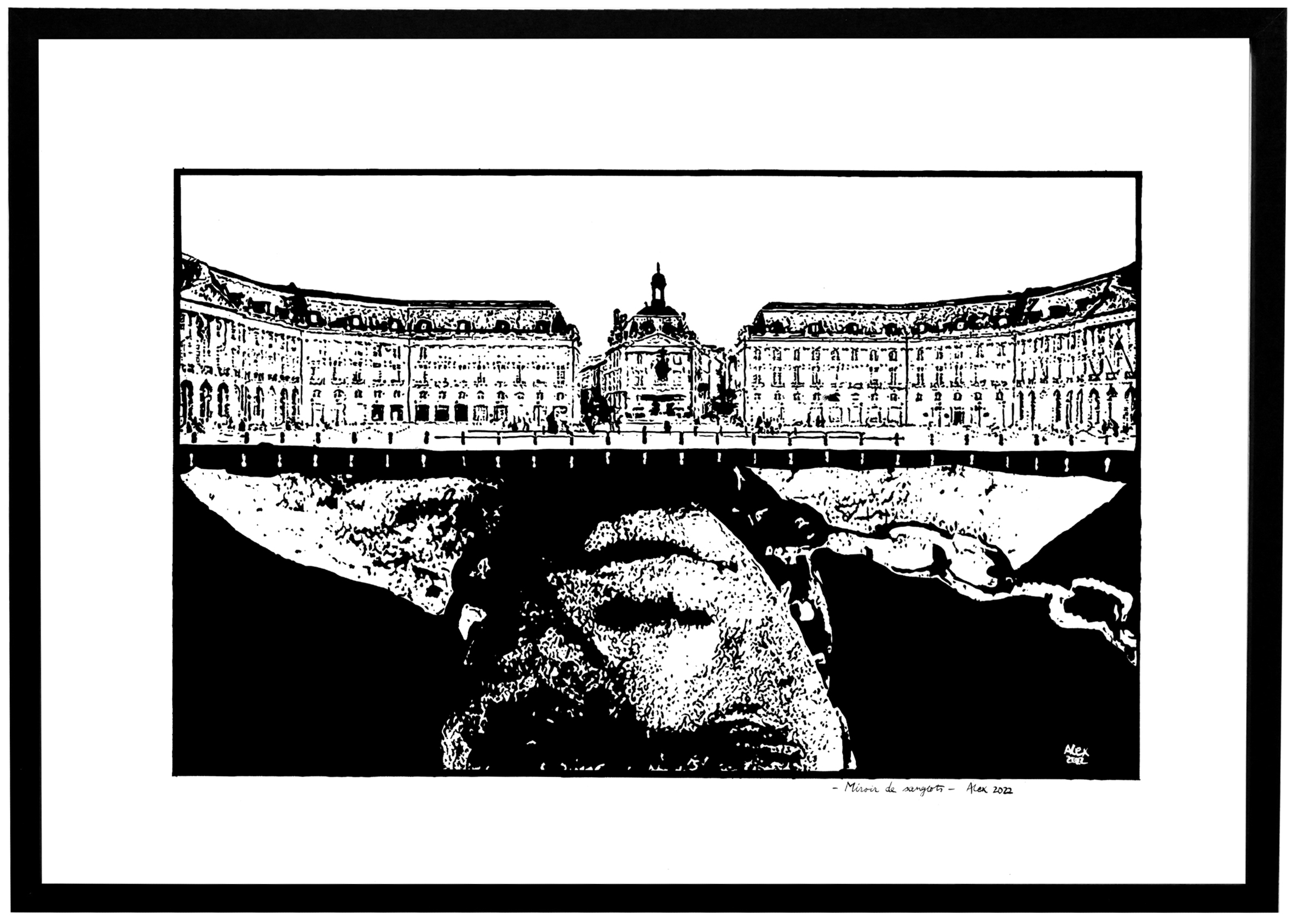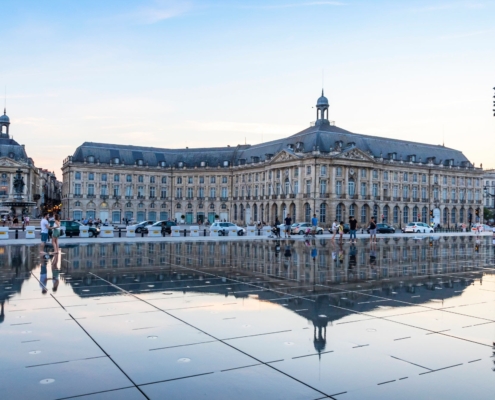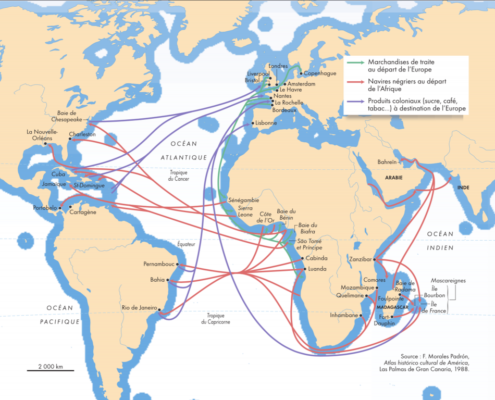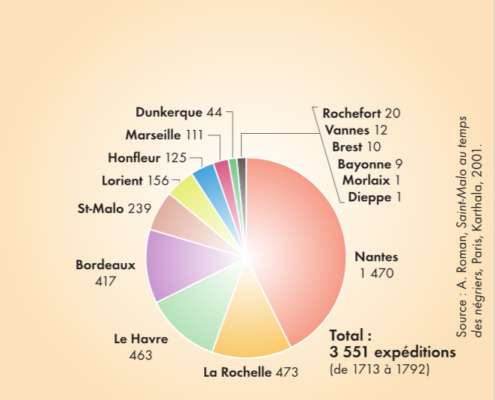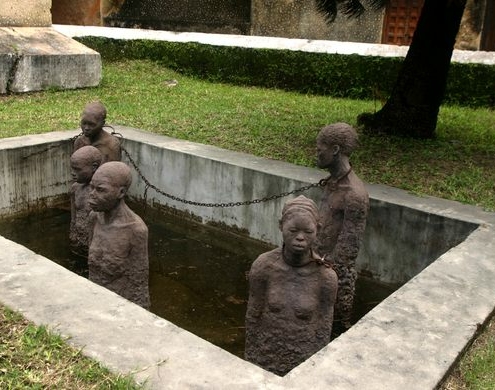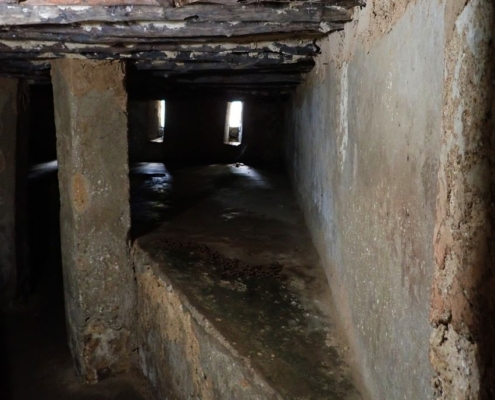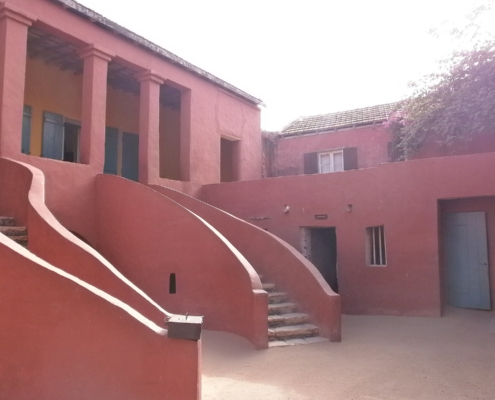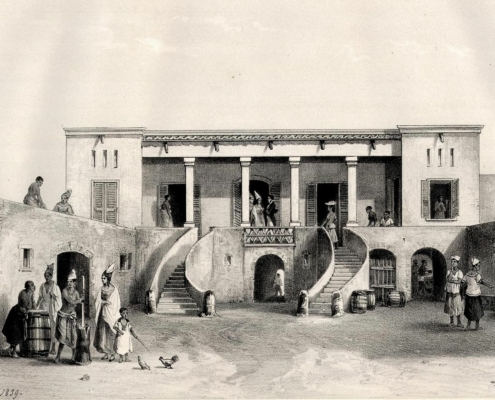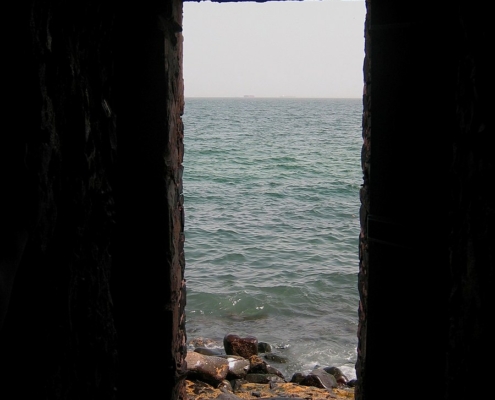The title of the drawing is Miroir de sanglots (‘Mirror of tears’), a counterpoint to the famous Miroir d’eau of Bordeaux, designed by the artist Michel Corajoud and located opposite the Place de la Bourse and the Quai de la Garonne.
Bordeaux is a prosperous city where life is pleasant. However, this mirror reveals an aspect of its history that has long remained hidden: its sinister role in the trade of black slaves deported from Africa.
The Bordeaux slave trade was a very lucrative business, with 480 shipments recorded between 1672 and 1837, nearly 180 Bordeaux shipowners and 150,000 slaves. Other French ports were also involved in the slave trade, including La Rochelle, Saint-Malo, Le Havre and above all Nantes, with almost 1,500 shipments.
However, these French cities still lag far behind British ports like Liverpool, with its 5,000 recorded shipments.
The slave’s reflection in the mirror was inspired by a group of exceptional bronze statues by the Swedish sculptor Clara Sörnäs located near the old slave-trade square in Stone Town (Zanzibar).
In recent years, the city of Bordeaux has become more aware of its slave-owning past, which is now being brought out into the open with commemorative street plaques and exhibitions, in the hope that public education will ensure that the horror of slavery is not forgotten.
French law no. 2001-434 recognises the slave trade and slavery as a crime against humanity. It was passed by the French Parliament on 21 May 2001.
Further reading
- Daget, S., (dir.) et al., De la traite à l’esclavage : actes du Colloque international sur la traite des noirs, Nantes et Paris, Centre de recherche sur l’histoire du monde atlantique et Société française d’histoire d’outre-mer (1985), 1988, 733 p., 2 volumes.
- Duprat, J., Présences noires à Bordeaux : passage et intégration des gens de couleur à la fin du XVIIIe siècle, PhD dissertation, l’École des chartes, France, 2017.
- Pétré-Grenouilleau, O., ‘Et la France devint une puissance négrière’ L’Histoire, 353, may 2010 | Online
- Paquette, G., ‘L’esclavage, de la traite à l’abolition’, National Geographic, 08/2018 | Online
- Smith, D., ‘Zanzibar’s slave market is a site made sacred by history’, The Guardian, 26/08/2010 | online
- Villiers, P., Traite des noirs et navires négriers, Grenoble, Terre et mer, 1982
Resources
- Mémoire de l’escalvage et de la traite négrière, Ville de Bordeaux | online
- Clara Sörnäs, sculptor the Slave Market memorial in Zanzibar Stone town | online | more pics
- La traite négrière à Bordeaux | wikipedia
- Le Miroir d’eau, Bordeaux | Ville de Bordeaux | Jean-Max Llorca | Michel Corajoud
- Loi no. 2001-434 du 21 mai 2001 | online

